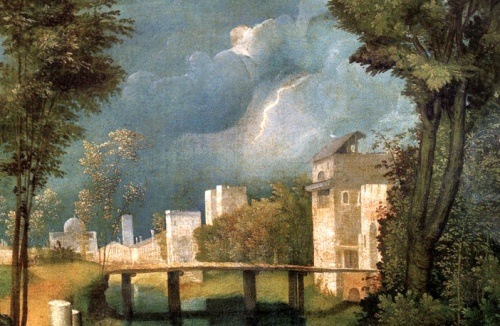The prevalent air regimes dominating Venice include the regional sirocco (scirocco) wind and the strong and gusty local bora (borea, a föhn wind, from the Latin ventus favonius). The bora blows in from either the north (the Alps) or from the west (the Balkans), raising temperatures and lowering humidity; it is typically accompanied by low clouds and reduced visibility.
Vivaldi’s instrumental compositions, especially those with programmatic implications, abound with musical illustrations of winds and their rhetorical satellites. Three out of his four solo violin concertos that make up Le quattro stagioni (1725) feature winds as protagonists controlling the imagery, the attached sonnets, and the music itself.
Vivaldi’s operatic librettos are especially abundant in such allegorical keywords and rhetorical interplay. Winds and breezes, along with other stereotypical concetti—symbolic representations of animals (lion, hind, snake), various birds (goldfinch, nightingale, swallow), and butterflies—abound in his operatic arias.
Often the direct verbal use of “wind” is substituted with its rhetorical alternatives such as tempest (tempesta), thunder (tuono), storm (borasca), air vortices (vortici), flashes and lightings (lampi), high sea waves (onde), clouds (nouvole), and others. The fact that most of Vivaldi’s operatic librettos were provided or adapted by local writers suggests that the wind was a symbol common to the entire Venetian tradition.
This according to “Sirocco, borea, e tutti i venti: Wind allegory in Venetian music” by Bella Brover-Lubovsky, an essay included in Musik—Raum—Akkord—Bild: Festschrift zum 65. Geburtstag von Dorothea Baumann (Bern: Peter Lang, 2012, pp. 149–162).
Above, a detail from Giorgione’s La tempesta, a depiction of Venetian weather from the early 16th century. Below, Vivaldi’s celebrated depiction from Le quattro stagioni.




